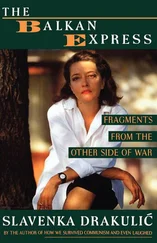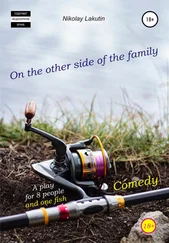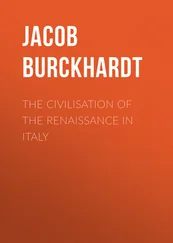The fact that the irredentist movement arose among the Italians who were actually trapped on the territory of the neighboring state is not surprising. The patriotism of the “Tyrolean Italians” was dual: besides the sense of their “small homeland” and their own land (Trentino), they also had a very strong sense of their historical homeland, that is, Italy. On October 24, 1911, Cesare Battisti appealed with passion to the common sense of the parliament members: “This monarchy cannot control itself, to say nothing about its territories! Just take a look at what’s happening with its government, if this helpless gang of embezzlers can still be called a government! They are failing to approve their own budget for the second year! Why do we, Italians, have to hold this country that has been ruined long ago on our shoulders? They consider us to be their slaves and demand loyalty – is this not the greatest absurdity in the world?” The Italian mentality, not prone to assimilation, made the problem of “Tyrolean Italians” practically impossible to solve in any other way except war.
Cesare Battisti died on the scaffold, caught by the Austrian army and executed as a traitor. The last thing he saw before his death was the sky of his beloved Trento, which at that time was still remaining in the grip of Austria-Hungary.
The death of the national hero became a call to fight for other Italians. They fought for Trento with extraordinary fervour, fought to the last drop of their blood. They composed poems about Battisti, embroidered his portraits on banners, went to the battle to the sounds of the march “La leggenda dei Piave”, dedicated to Battisti.
The Entente kept its promises: Trentino, South Tyrol and other lands specified in the agreement became Italian. The biography of Alcide de Gasperi, like the biographies of many other “Tyrolean Italians”, would state: born in Austria-Hungary, died in Italy.
Cesare Battisti was not the only Italian national hero executed by the Austrians to be immortalized in the triumphal arch of the Victory Monument. The busts of two other people occupy another niche of the monument: the 35-year-old lawyer Fabio Filzi and the 22-year-old engineer-technician Damiano Chiesa (both sculptures were made by Adolfo Wildt). All the three of them were natives of Trentino and officers of the alpini detachments.
The project of the Victory Monument in Bolzano (Bozen) was implemented by one of the key architects of the Fascist era, Marcello Piacentini. The sculpture on the tympanum of the monument, above the ominous inscription about the borders from which the “others” were to be taught “language, laws and culture”, was made by Arturo Dazzi. It is called Vittoria Saggitaria, “Victory with an arrow”. On the back of the arch, there are three sculptural medallions: “New Italy”, “Air” and “Fire”. The inscription in Latin under the medallions says the following: “In honour and in memory of people of incredible courage, who, fighting in legal wars, resolutely won their homeland back with their own blood. All Italians donated money for this.” An irrefutable proof of the fact that the Victory Monument belonged to the Fascist era was a direct written reference to it on the south side of the monument. However, that inscription – “Benito Mussolini, Il Duce of Italy, the 6th year (of the Fascist era)” – was removed after 1945.
A surprising number of talented people worked on the implementation of the triumphal arch in Bolzano (Bozen) and on its details. For example, there is a sculpture of Christ the Redeemer by Libero Andreotti in the centre of the monument. The risen Christ ascends the granite altar calmly and solemnly. The statue produces an impression of calm and peace, not characteristic of other monumental works of the Italian master. Christ the Redeemer by Andreotti is one of the rare examples of truly sacred modern sculpture, and it seems paradoxical that it should be combined with the monument of the Fascist era.
The triumphal arch of the national martyrs was surrounded with a high fence almost immediately after its opening. Nevertheless, over the course of the 20th and 21st centuries, many things happened around it: protests, demonstrations, referendums, hanging memorial plaques, clashes between Germans and Italians, between the right and the left. It was repeatedly suggested that the Victory Monument should be demolished because it incites ethnic strife. In 1977, a union of several South Tyrolean parties submitted a bill in which they asked to consider the possibility of demolishing not only the Victory Monument in Bolzano (Bozen), but also all the buildings in the city which praise fascism. The bill, however, didn’t receive much support.

In 2001, Bolzano (Bozen) city council decided to change the name of the square in front of the monument from Victory Square to Peace Square, but in October 2002 it was renamed back. The results of the referendum showed that the German-speaking population voted unanimously for renaming the square, while the Italian-speaking population voted against. Once again, the Italians missed the opportunity to show their openness to the German-speaking residents of South Tyrol by giving up the idea of “victory” over their region – at least in the name of the square. We must, however, give credit to the city council, which attempted to put the inscription Già della Pace (“Already of Peace”) under the new sign of Piazza della Vittoria (Victory Square).
In 2004, information panels were installed approximately 50 metres from the Victory Monument; they contained the following text about the significance of Bolzano (Bozen) triumphal arch, written in four languages (Italian, German, Ladin and English): “Italy’s Fascist regime erected this monument to celebrate victory in the First World War, an event which brought the division of Tyrol and the separation of the population of South Tyrol from Austria, their mother country. The City of Bolzano, a free, modern and democratic town, condemns the discrimination and divisions of the past, as well as any form of nationalism, and pledges its commitment to promoting a culture of fraternity and peace in the true European Spirit”.
Installation of information panels next to the Victory Monument or on the monument itself was prohibited by decree of the Ministry of Culture following mass protests of the Italian right-wing parties.
On July 21, 2014, a permanent exhibition called BZ’18—45. One Monument, One City, Two Dictatorships was opened in the crypt and in other underground spaces beneath the triumphal arch in Bolzano (Bozen). The Victory Monument ceased to be inaccessible and frightening; now it was “speaking” about its own history, about the new Bolzano (Bozen), about past and present relations between language groups in the city. Numerous attempts to destroy the Victory Monument or to “weaken” it by depriving it of its historical significance would have had less effect than this exhibition. Trying to destroy or distort the past is a weakness. The power is in studying it, in understanding and transferring knowledge about it to next generations, so that they have the opportunity to become better than their predecessors. South Tyroleans were wise enough to clearly define their own position – that of commitment to peace and democracy – and to arrange a permanent exhibition under the Victory Monument.
The walls of one of the underground rooms, besides quotations from Cicero and Horace about fame and sacrifice to the fatherland, bear laser-projected quotes by Hannah Arendt (“No one has the right to obey”), Bertolt Brecht (“Unhappy those peoples who need heroes”), and Thomas Paine (“The duty of a patriot is to protect his country from its government”). One might say that the quotations have been taken out of the context, but the main principle – not to destroy, but to add – was chosen quite correctly. The quotations, superimposing the still phrases from the past, which can still be clearly seen, show explicitly that you need to know your history, no matter how painful it is, but you also need to be able to re-examine it, so that horrible mistakes should not be repeated in future.
Читать дальше













